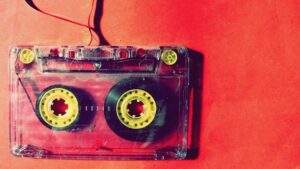Exploring the Evolution of Music Technology
Discover the journey from vintage turntables to today’s advanced music production tools, and how they’ve reshaped the music landscape.The fascinating journey of music technology is a testament to human creativity and our relentless pursuit of artistic expression. From the grooves of vinyl records to the digital landscapes of streaming platforms, each leap in technological advancement has taken the timeless essence of music into new realms of possibility. This article explores this evolution, tracing the path from the beloved turntables of the past to the sophisticated digital instruments that shape today’s musical horizons.
The Journey from Analog to Digital
The evolution of music technology has been a fascinating journey, transitioning from the tactile warmth of vinyl records spun on turntables to the crisp, digital clarity of streaming services. This transformation has not only changed how we listen to music but also how artists create it, offering endless possibilities in sound manipulation and distribution.
Turntables, once the cornerstone of DJing and music production, symbolize the tactile relationship between the artist and their medium. The art of scratching and mixing records became a form of expression, paving the way for genres like hip-hop and electronic music to flourish.
The Vintage Era: Turntables and Tangible Music
In the golden age of vinyl, turntables were not just devices, but gateways to the magical world of sound. They were the heart of the musical experience, revered for the warmth and tactile connection they provided to music lovers. The ritual of choosing a record, placing the needle on the groove, and anticipating the hiss before the music began is a cherished memory for many. This era was characterized by physical interaction with music, where album covers, sleeves, and the careful handling of vinyl records were an integral part of the experience.
Turntables did more than just play music; they became instruments in their own right in the hands of DJs and music producers. The art of scratching, beat-mixing, and live mixing gave rise to new musical genres and subcultures. Hip-hop, in particular, owes much of its early development to the craft of turntablism, where DJs such as Grandmaster Flash and Jam Master Jay became as important to the music as the DJs themselves. The tactile feedback and analog nuances of turntables fostered a unique form of creativity, making them a favorite mainstay in the music world.
Transition to the Digital Age: The Rise of Digital Audio Workstations
With the onset of the digital revolution, the music industry experienced a seismic shift. The emergence of digital audio workstations (DAWs) marked a new era when the possibilities for creating music became almost limitless. These powerful tools turned personal computers into full-fledged recording studios, democratizing music production and allowing artists to create, edit, and produce music from virtually anywhere.
The shift from analog to digital sound has led to a paradigm shift in the production, distribution, and consumption of music. The tactile, mechanical interaction with music has given way to a click-based on-screen interface, introducing a new level of precision and versatility. Sampling, which once required a physical record and a sampler machine, could now be done with a few clicks of the mouse, dragging and dropping sounds from vast online libraries onto a track. The granularity of control in digital audio allowed for careful editing, pitch correction, and sound manipulation – tasks that were unimaginable in an analog environment.
Modern Innovations in Music Creation
- Digital Audio Workstations (DAWs)
- Software Synthesizers and Samplers
- Virtual Reality Musical Instruments
Today’s music creators have a plethora of tools at their fingertips. Digital Audio Workstations (DAWs) allow for intricate compositions, while software synthesizers and samplers offer endless sonic possibilities. The advent of virtual reality musical instruments is even beginning to blur the lines between the physical and digital worlds of music creation.
Comparative Analysis: Then and Now
| Feature | Vintage Turntables | Modern Digital Tools |
| Medium | Vinyl Records | Digital Files/Streaming |
| Interactivity | Manual Mixing, Scratching | Automated Mixing, Digital Effects |
| Portability | Bulky, Fragile | Compact, Durable |
The table above highlights the stark differences between the old and new eras of music technology, illustrating a shift towards more accessible, versatile, and innovative tools for music creation.
FAQs
How have turntables influenced modern music production?
Turntables introduced the concept of manipulating sound live, leading to the development of remix culture and genres like hip-hop and EDM.
What are the benefits of modern digital music tools?
They offer limitless creative possibilities, ease of use, accessibility, and the ability to distribute music globally with ease.
Can vintage and modern music technologies coexist?
Absolutely. Many artists blend the warmth of analog sound with the precision of digital tools, creating unique sonic landscapes.
Explore the future of music technology and its impact on the industry with our insights on emerging trends and predictions.
